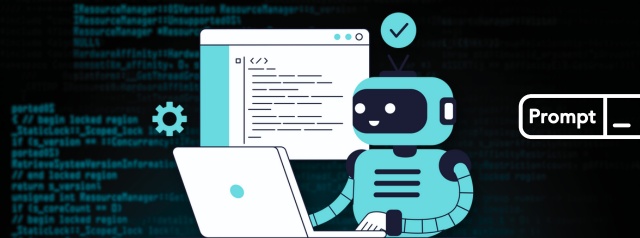Forget the syntax. Forget the semicolons. The future of coding doesn’t look like code at all, it sounds like conversation. And those who master it? They’re not just early adopters. They’re the architects of tomorrow.
It’s 2025. You’re no longer writing code, you’re writing prompts. Not because you can’t code, but because now, that’s not the point. Because what used to be hours of wrestling with logic loops and stacks can now be done in minutes, if you know how to speak machine fluently.
This is the age of prompt engineering. And it’s changing everything.
The Skill You Didn’t Know You’d Need
Let’s make one thing clear: this isn’t a trend. It’s a tectonic shift.
Once upon a time, coding was the literacy of the digital age. Now, it’s being joined, perhaps even rivaled, by a new fluency: the ability to command large language models with intention, nuance, and creativity. Not with lines of code, but with words. Carefully chosen, elegantly structured, obsessively iterated words.
Think that’s easy? Think again.
Behind every jaw-dropping ChatGPT response you’ve seen online, there’s likely a prompt that’s been massaged, reworked, and rewritten a dozen times. Prompt engineering isn’t typing. It’s crafting. It’s directing. It’s part UX design, part screenplay, part systems thinking, and all communication.
Words as Interface, Prompts as Power
We’ve all had moments when the perfect message took a few drafts to get right. Prompting an AI isn’t all that different.
But here’s the shift: instead of sending that message to a person, you’re now guiding a generative AI model to do something complex, write UX copy in your tone, generate a SQL query based on raw inputs, summarize a dense legal clause, or even plan an entire content campaign with the right voice and structure.
And when you get it right, the result doesn’t just save time, it amplifies your clarity.
That’s what prompt engineering enables: using natural language to drive precise, context-aware, and highly personalized outputs. It’s more than productivity, it’s a new kind of creative flow.
Like any powerful tool, prompting has its layers:
- Instructional prompts for direct and focused outputs
- Chain-of-thought prompts to guide reasoning step by step
- Few-shot examples that show patterns to learn from
- Role-based prompting to shape tone, perspective, or professional context
This isn’t just technique, it’s the evolving syntax of natural language programming. A new way of interacting with technology, not through code, but through intention.
And when mastered, these structures help AI work with you, not just for you. They don’t limit creativity, they unlock it.
Everyone Can Type. Few Can Prompt, Yet.

The accessibility of generative AI is one of its biggest strengths. Anyone can open a chat window and try it out. That ease of access is what makes this wave of technology so exciting.
But there’s a growing difference between using AI casually and using it intentionally. And that difference often comes down to one thing: the prompt.
Those who are spending time exploring what makes a great prompt, what structures work, how to provide context, how to layer logic, are discovering something powerful. Their tools are responding not just faster, but better. Their ideas are turning into working drafts, frameworks, and deliverables, faster than ever before.
They’re:
- Prototyping product flows by simply describing them
- Drafting customer-facing copy that aligns with tone and voice
- Generating reports and research summaries ready for review
- Shaping AI tools into creative collaborators for ideation and execution
This isn’t about replacing effort, it’s about redirecting it toward higher-value thinking. Prompt fluency helps you focus on solving the real problem while the machine handles the structure.
When you know how to ask clearly, AI becomes an extension of your skill, not a shortcut, but a multiplier.
At Experion, we help forward-thinking teams develop prompt fluency that aligns with real-world goals. Whether you’re building internal tools, customer-facing apps, or AI-driven workflows, we help you design smarter conversations with technology.
Prompt Engineers Aren’t Hacking the System, They’re Speaking Its Language

In the world of generative AI, success doesn’t come from tricking the system, it comes from understanding it.
Prompt engineers aren’t exploiting shortcuts. They’re learning to speak a new kind of language. One that’s grounded in clarity, guided by logic, and shaped by creativity. It’s the language of large language models, where well-crafted input becomes the foundation of meaningful, accurate, and useful output.
As AI becomes more deeply embedded in our tools, our processes, and our decisions, the ability to design thoughtful prompts isn’t just a niche skill, it’s becoming foundational. In today’s AI-first workflows, knowing how to work with generative AI is no longer optional. Prompt fluency is becoming part of everyday digital literacy.
The Talent Market Is Already Listening
And companies are paying attention.
What once sounded experimental is now landing in real job descriptions. Search “prompt engineer” or “AI content strategist,” and you’ll find titles like:
- AI Experience Designer
- Conversational UX Strategist
- Prompt Optimization Specialist
And the language in these listings is telling:
- “Experience working with generative AI models like GPT or Claude”
- “Strong ability to craft prompt chains for varied use cases”
- “Deep understanding of how LLMs respond to context and structure”
These roles aren’t reserved for data scientists or technical architects, they’re appearing across product, content, UX, and marketing teams. The ability to shape how AI understands intent is becoming a competitive advantage, for individuals and organizations alike.
Prompt engineering isn’t just about interacting with machines. It’s about enhancing how we ideate, communicate, and build, across every domain.
Will Prompt Engineering Be Automated?
The tools are evolving. Auto-prompting features are already beginning to assist with input formatting, template generation, and tone adjustment. It’s true, some parts of the prompt-writing process will become automated. But that doesn’t make the human role less important, it makes it more strategic.
Think of how Figma elevated design. How WordPress made front-end development more accessible. Or how templates changed the way we write proposals and pitch decks. Automation didn’t replace skilled practitioners, it simply raised expectations.
As prompt tooling advances, the need for thoughtful, context-aware, and creative human input will grow. Not disappear.
At its core, prompt engineering is a thinking discipline. It’s about understanding the system, defining the right intent, and shaping output with purpose. That won’t go away, it will simply evolve.
You Don’t Need to Code. But You Do Need to Think Like a Builder.
The beauty of this shift? You don’t need to be a developer to build with AI.
But you do need to think like one, modularly, structurally, and iteratively.
- You don’t need to write Python. But understanding flow, clarity, and logic helps.
- You don’t need to connect APIs. But you’ll benefit from knowing how to stack context and chain requests.
- You don’t need to debug. But you’ll find yourself testing, tweaking, and refining, often more than once.
The most successful prompt engineers aren’t necessarily the most technical. They’re the most agile, curious, and clear-thinking. They know how to break down a task, provide just enough information, and anticipate how AI will interpret their intent.
In this space, communication becomes the new architecture. And structure becomes the new syntax.
So, Are You Fluent Yet?
So, Are You Fluent Yet?
We’re already living in a world where AI is part of daily workflows, helping us write, ideate, analyze, and automate. That shift is no longer on the horizon. It’s already here.
The real question is no longer “Will you use AI?” but rather: “Can you guide it well?”
Because the better you can shape your instructions, the more valuable your outcomes become. Prompt engineering is less about learning a tool, and more about learning how to translate your intent into action.
So the next time you open ChatGPT, Claude, or Gemini, Don’t just type. Craft. Direct. Design.
After all, in this new era of natural language programming, Your words are your code.

